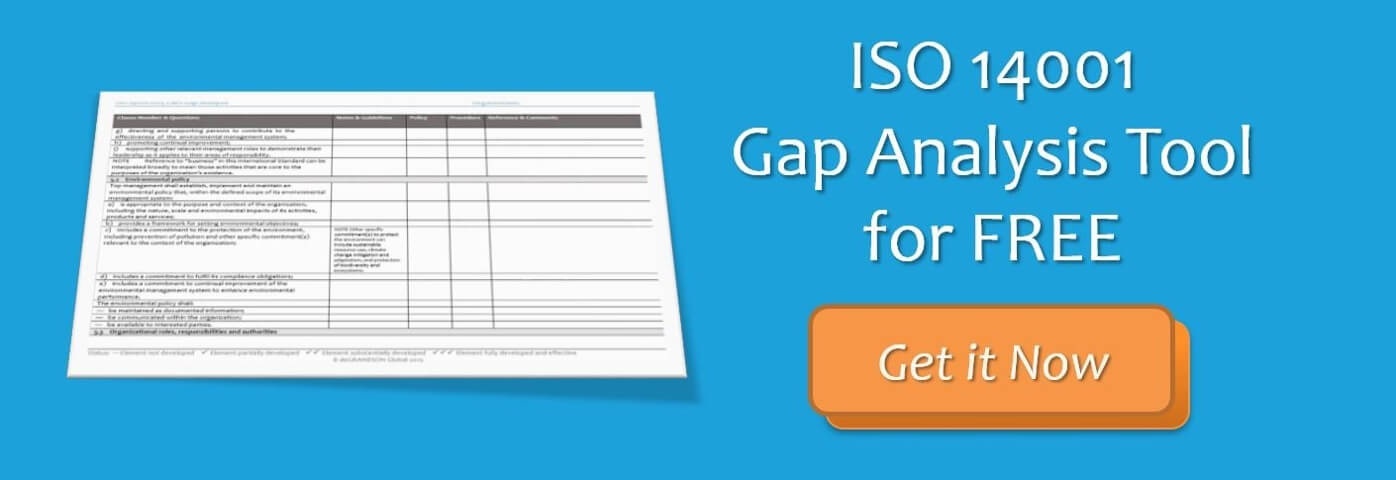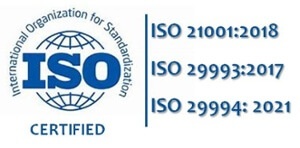
Increasing environmental concerns and the urgent need to combat climate change are prompting organizations worldwide to look for ways not only to reduce their environmental impact but also to work towards achieving a net zero footprint or, at the very least, carbon neutrality.
Net Zero vs Carbon Neutral
Often used interchangeably, net zero and carbon neutrality are related concepts with distinct meanings and implications in the context of carbon emissions and climate change.
When organizations target carbon neutrality, they are committing to reviewing their carbon dioxide (CO2) emissions and offsetting them through emission reductions in other areas or by finding ways to actively remove an equivalent volume of CO2 from the atmosphere.
Net Zero, conversely, involves diminishing an organization's total emissions throughout its entire supply chain to align to constrain global temperature rises to 1.5 degrees Celsius.
Carbon Neutrality, Net Zero, and ISO 14001
ISO 14001, as an internationally recognized standard for environmental management systems (EMS), can be a big help to organizations working their way toward achieving carbon neutrality or net zero emissions.
By providing a structured framework for sustainable practices, ISO 14001 guides organizations in setting clear environmental objectives, measuring and reducing their carbon footprint, improving energy efficiency, and minimizing waste while ensuring compliance with environmental regulations at the same time.
Benefits of Carbon Neutrality or Net Zero Emissions
Embracing sustainability initiatives offers a range of financial advantages to organizations, both big and small.
One, it can lead to substantial operational cost savings over time. These savings typically come from reduced energy consumption, minimized waste generation, and enhanced resource efficiency.
Sustainability measures also promote long-term financial resilience by mitigating climate-related risks and lowering regulatory compliance costs, enhancing an organization's stability and endurance.
In addition to cost savings, green technologies and practices can foster innovation and provide a competitive edge, opening doors to new revenue streams.
Many governments further encourage sustainable practices by offering tax incentives, rebates, and grants to organizations, providing additional opportunities for cost reduction.
Lastly, companies proactive in managing climate risks may qualify for insurance premium reductions and incentives from insurers, adding another layer of financial benefit to sustainable strategies.
How ISO 14001 help organizations achieve net-zero emissions
ISO 14001 is an international standard that provides a framework for organizations to manage their environmental impact. It sets out requirements for an EMS, a systematic approach to identifying, controlling, and monitoring an organization’s environmental impact. The standard is designed to be flexible and adaptable, making it suitable for organizations of all sizes and sectors.
One of the key benefits of ISO 14001 is that it helps organizations identify and manage their environmental risks and opportunities. Organizations can identify areas where they can reduce their environmental impact and improve their sustainability by conducting an environmental review. In addition, ISO 14001 requires organizations to set environmental objectives and targets, which can be used to track progress and measure success.
Net-zero emissions mean an organization is not producing more greenhouse gas emissions than it removes from the atmosphere. Achieving this goal requires a comprehensive and coordinated approach to managing emissions across an organization’s operations and supply chain.
ISO 14001 provides a framework for organizations to identify and manage their greenhouse gas emissions. Organizations can identify the sources of their emissions by conducting a greenhouse gas emissions inventory and developing a plan to reduce or offset them. ISO 14001 also requires organizations to set targets for reducing their greenhouse gas emissions, which can be used to track progress and measure success.
But achieving net-zero emissions is not just about reducing emissions.
It also requires organizations to actively remove greenhouse gases from the atmosphere. This can be achieved through various methods, including reforestation, carbon capture and storage, and renewable energy.
ISO 14001 can help organizations to incorporate these methods into their environmental management system. For example, organizations can set targets for increasing their use of renewable energy or investing in reforestation projects. By including these targets in their EMS, organizations can ensure they are actively working towards achieving net-zero emissions.
Reducing environmental impact in the Supply Chain
Another way that ISO 14001 can help organizations to achieve net-zero emissions is by providing a framework for managing their supply chain. The greenhouse gas emissions associated with a product or service are not limited to the organization that produces them. They also include the emissions associated with the production and delivery of raw materials, the transportation of the product or service, and the disposal of any waste.
ISO 14001 requires organizations to consider their supply chain when identifying their environmental impact. Organizations can reduce their environmental impact by working with suppliers to reduce the overall greenhouse gas emissions associated with their products and services. This can include setting ecological requirements for suppliers, such as requiring them to report on their greenhouse gas emissions or to use renewable energy.
Carbon Neutrality or Net Zero Goals Across the World
The United Kingdom has passed the "Climate Change Act 2008" and is legally committed to achieving net-zero greenhouse gas emissions by 2050. Similarly, the European Union, through the European Green Deal, aims to make the EU the world's first climate-neutral continent by the same year.
In Europe, Sweden, through its policy framework that includes a Climate Act, legally binds the government to reach net-zero emissions by 2045. Neighboring Norway, on the other hand, has passed legislation to achieve net zero greenhouse gas emissions by 2030.
In North America, many US states have established their own net-zero or carbon neutrality targets as part of their efforts to combat climate change. Canada, meanwhile, introduced the "Net-Zero Emissions Accountability Act," which aims to establish a legally binding process to achieve net-zero emissions by 2050.
In Asia, South Korea announced a "Green New Deal" in 2020, which includes a commitment to achieving net zero emissions by 2050, while Japan announced its goal of achieving carbon neutrality by 2050. China also announced its commitment to achieving carbon neutrality by 2060, and The United Arab Emirates announced its commitment to reach net-zero emissions by 2050.
In South America, Uruguay has set a goal to achieve carbon neutrality by 2030, while Chile and Peru target the same by 2050. On the other hand, Colombia aims to achieve net zero carbon buildings by 2050 and Costa Rica's net zero emissions by the same year.
In Australia and Oceania, the Australian government released its Long-Term Emissions Reduction Plan to achieve net zero emissions by 2050. New Zealand committed to reducing net greenhouse gas emissions to zero by the same year.
Lastly, in Africa, South Africa announced their intention to achieve carbon neutrality by 2050, while Ethiopia had set its sights on 2030.
How to Obtain Carbon Neutrality or Net Zero Emissions
Many company managers wonder where to begin constructively addressing Carbon Neutrality or Net Zero goals and mobilizing their organization meaningfully and positively.
Here is a set of nine essential actions that can help you achieve the said targets, and against each, you should set a measurable Environmental Objective.
- Set Clear Goals
Define specific and measurable goals for achieving net zero emissions or environmental impact. This may include reducing greenhouse gas emissions to zero or balancing emissions with equivalent removal or offset measures.
- Measure Your Baseline
Before reducing your environmental impact to net zero, you need to understand your current emissions and environmental footprint. Conduct a thorough carbon and environmental footprint assessment to identify sources of emissions and other environmental impacts.
- Reduce Emissions
Implementing measures to reduce emissions may involve energy efficiency improvements, transitioning to renewable energy sources, and optimizing transportation and supply chain logistics.
- Offset Emissions
In cases where it's not possible to completely eliminate emissions, consider purchasing carbon offsets or investing in projects that remove or reduce an equivalent amount of greenhouse gases from the atmosphere. These could include reforestation projects or renewable energy initiatives.
- Switch to More Sustainable Products and Building Designs
Sustainable product designs and sustainable building designs are both critical elements in the achievement of carbon neutrality or net zero goals. They address the carbon energy levels of products and structures and ensure they align with net zero and greenhouse gas reduction targets.
- Engage Stakeholders
Involve employees, suppliers, and other stakeholders in your net-zero journey. Promote a culture of sustainability within your organization and encourage sustainable practices throughout your supply chain.
- Conduct Regular Monitoring and Reporting
Regular audits help monitor and measure your environmental performance to ensure you're on track to achieve net zero. Develop a transparent reporting system to communicate your progress to stakeholders.
- Comply with Relevant Regulations
Ensure your organization complies with all applicable environmental laws and regulations.
- Seek Certification and Third-Party Verification
Consider seeking certification or verification from relevant organizations or bodies to validate your net-zero status and provide credibility to your claims.
Carbon Neutrality and Net Zero Challenges
Achieving net zero or carbon neutrality goals can be complicated.
One of the first issues is the need for substantial emissions reductions across multiple sectors. This often entails substantial investments in new technologies and infrastructure. Funding these initiatives can be challenging, particularly for smaller businesses and developing countries.
Additionally, while reliance on carbon offsetting is a valid strategy, it can sometimes divert focus from the critical goal of direct emissions reduction. You also have regulatory and political hurdles, which can also slow progress.
Lastly, monitoring and verifying emissions, particularly in supply chains, can be a logistical challenge.
How ISO 14001 Compliance Can Help with Achieving Your Carbon Neutrality or Net Zero Emission Goals
While addressing the challenges mentioned above can require tremendous effort, costs, and determination, there are ways to work around them.
An excellent way to start is by implementing an ISO 14001-compliant environmental management system.
For example, financial challenges can be addressed through cost-benefit analyses, where ISO 14001's focus on operational efficiency can help identify opportunities for cost savings that can be reinvested in sustainability initiatives.
There’s also ISO 14001's risk management framework, which can aid in addressing regulatory and political challenges by ensuring organizations remain adaptable and responsive to evolving environmental policies.
Lastly, ISO 14001's emphasis on monitoring and measurement also aligns with the need for accurate emissions data, making it essential for addressing these challenges and driving progress toward net zero or carbon neutrality.
Role of Carbon Neutrality and Net Zero in the Future
Carbon Neutrality and Net Zero are poised to play a central role in the future of climate action. It will continue to guide international climate policies, shape business strategies, and inspire individuals to adopt sustainable lifestyles. The sooner you put measures designed to achieve them in place, the bigger the potential benefits to all humanity.
Achieving Net Zero will take years.
Using the ISO 14001 framework, you can set goals and develop a comprehensive plan to reach Net Zero based on your specific circumstances and environmental challenges. And in so doing, turn wishful thinking into real achievement you and your colleagues can be proud of.
But it will take time, and top management must not have unrealistic expectations. But, as they say, the sooner you start, the sooner you finish.
Related Articles
- The ISO 14000 Family of Environmental Standards
- ISO 14001 Free Implementation Handbook (100+ pages)
- How to do an ISO 14001 Gap Analysis
- Environmental Aspects - meeting the ISO 14001 Requirements
deGRANDSON Global is an ISO Certified Educational Organization
We have chosen ISO 21001 certification because, unlike IRCA and Exemplar badges (which, in our opinion, are commercially compromised), it is based on independent third-party assessment. It is a ‘university grade’ standard in use globally by schools, colleges, and universities to demonstrate their competence.



